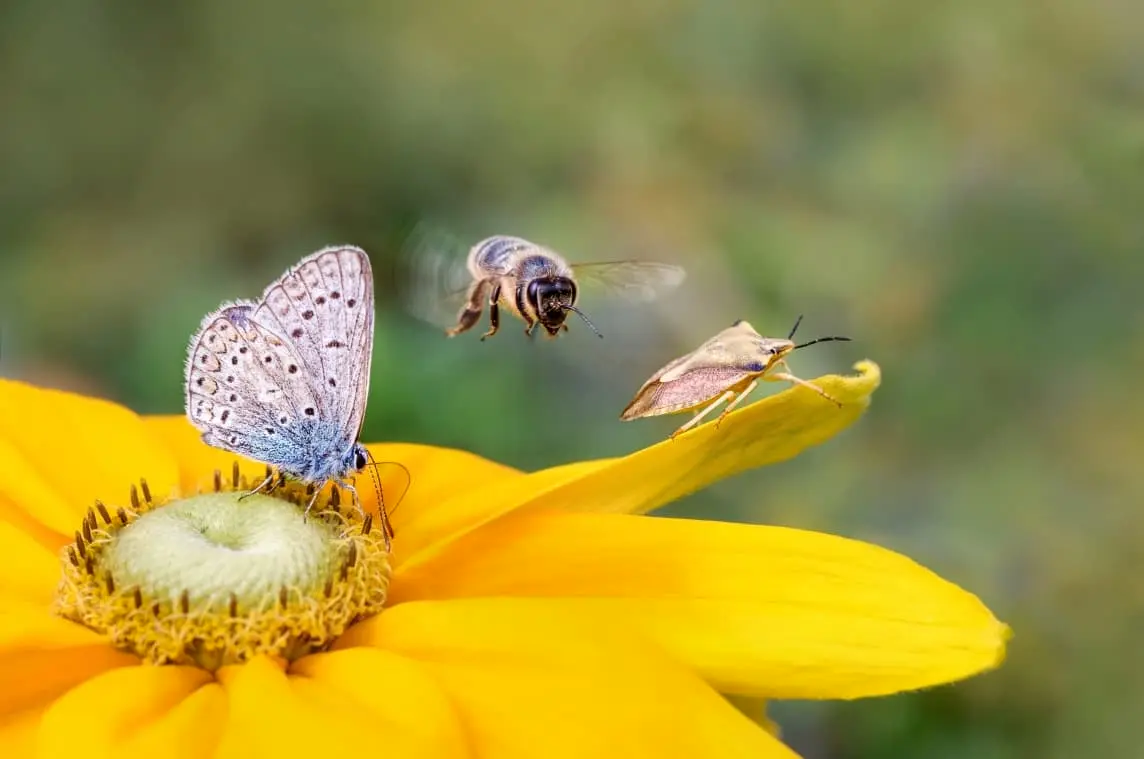Myth #1: “Pesticides are approved by Health Canada so they’re safe.”
Reality: Approval from Health Canada does not say that a pesticide is “safe.” The decision is instead based on “acceptable risk.” This language difference matters. Using more pesticides than the label allows can go beyond the “acceptable risk” calculated by Health Canada (and in fact breaks the law). It is misleading and dangerous to refer to toxic substances like pesticides as “safe.” Moreover, Health Canada’s Pest Management Regulatory Agency itself was the subject of a scathing audit in 2016. As The Globe and Mail reported, this agency “allowed pesticides that it deemed as posing unacceptable risks to humans and the environment” to be used for several years.
Myth #2: “If we don’t use pesticides our yards or city will be overrun by weeds.”
Reality: Cities across Canada with cosmetic pesticide bans have beautiful lawns, gardens, and parks – Vancouver is one example. (Montreal, Halifax, Toronto, and indeed the entire province of Ontario also have cosmetic pesticide bans.) They all use readily available non-toxic alternatives to control weeds, including practices such as topdressing soil, mowing high, and alternative planting. These cities also benefit from greater biodiversity than places that use pesticides. Lawn care companies have adapted to these bans and their businesses continue to thrive. And many of the most prestigious golf courses are pesticide-free; see Samso golf course in Denmark, for example.
Myth #3: “Pesticides are harmless.”
Reality: Pesticide exposure has been linked with cancer, neurodevelopmental disorders, and other serious illnesses. Risk is increased for children, who crawl and play on lawns, as well as pets who spend time outdoors. Pesticides are also tracked indoors on shoes, pets, and on the wheels of bikes or strollers, and enter through open windows. They can also drift from applied areas onto food gardens and runoff can enter waterways. Pesticides are also linked to the massive drop in populations of pollinators and wild birds, and to the loss of biodiversity in general. A recent study shows that pesticides harm the soil organisms that “underpin all life on land.”
Myth #4: “Pesticide use is decreasing so there’s no need for a ban.”
Reality: Pesticide use in Edmonton is increasing, according to the city’s own numbers. For example, between 2019 and 2020, use of 2,4-D amine, deemed a possible carcinogen by the World Health Organization, increased from 202.5 kg to 312.8 kg, an increase of 54 percent. Meanwhile, use of glyphosate, deemed a probable carcinogen by the World Health Organization, increased from 161.6 kg to 297.9 kg – an increase of 84 percent! Use of acephate, an acetylcholinesterase inhibitor (impacts the central nervous system) and a pesticide are possibly linked to lower IQ and verbal comprehension in children, increased from 0.9 kg to 64.04 kg – an increase of 7019 percent!
Myth #5: “We need to keep pesticides as ‘a tool in our toolkit.’”
Reality: “Integrated Pest Management”, the approach that Edmonton currently uses, theoretically begins with the lowest-risk option for pest management and only uses pesticides as a last resort. In practice, however, there is no clear agreement on what IPM means. As one local lawn care company states, IPM means using “all necessary techniques” to kill pests. In spring 2021 the city of Edmonton itself planned to increase pesticide use as an “efficient” option for dealing with weeds (until members of the public protested and overturned the plan). The “tool in a toolbox” is industry language intended to uphold pesticide use and “IPM” is just a fancy term for business as usual.
Also keep in mind that pesticides don’t work, which is why chemical companies love them; as long as people believe that poisoning nature and ourselves is acceptable, pesticides are the perfect ongoing money-making opportunity. Want proof? We have been fighting Canada thistle pretty much since confederation. One never wins a “war on weeds.” Rather than an exclusionary, colonial approach, what we need instead is peaceful co-existence and a focus on biodiversity. (Plus, bees love Canada thistle.)
Finally, a bonus myth for city councillors: “After registration, pesticides are continually monitored to ensure that they have been used according to the label and are performing as expected.”
Reality: Good luck with that one. In Pesticide Free Edmonton’s recent meeting with Alberta Environment, AE stated that they just don’t have the resources for monitoring. If your neighbour sprays lawn chemicals against regulations? Too bad. Complaints are not even addressed (as we in PFE have experienced).
